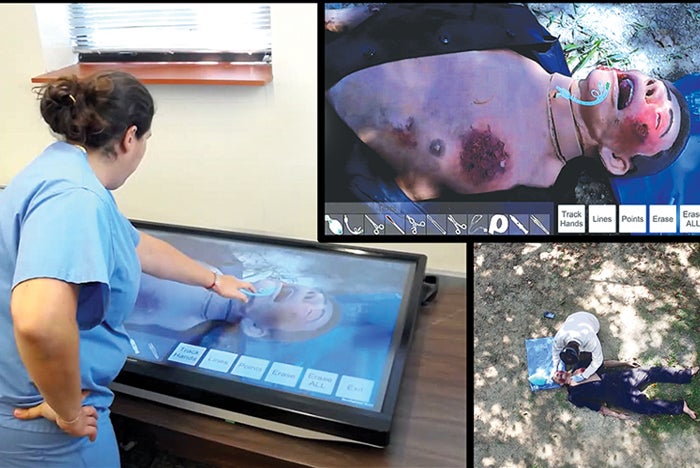An augmented reality tool helps improve remote care

Purdue University researchers have developed a unique approach using AR to help doctors in remote areas perform complicated procedures.
Photo courtesy of Purdue University
Researchers at Purdue University, West Lafayette, Ind., have developed an augmented reality (AR) tool designed to replace current telestrator technology used by physicians to communicate with peers who are administering care in remote and often chaotic areas.
A telestrator, also known as a video marker, allows users to draw freehand sketches over a moving or still video image. Clinicians in war zones or areas of natural disaster, for instance, can send photos of injured patients to peers who may have more expertise in a given case. Those physicians can use a telestrator to draw diagrams or write instructions over the image and send it back.
The Purdue system uses AR tools to connect health care professionals in the field with experienced surgeons and physicians around the world. The mentee in the field wears an AR headset that allows him or her to see the patient while also providing instant video to the mentor at a separate location. The system also includes images from drones that give the mentor a wider view of the mentee’s surroundings.
The mentor can provide instant feedback and even give visual instruction to the mentee on next steps, such as by clicking on the image of a medical tool and dragging it to the site on the patient’s body where it should be used or drawing a line where an incision should be made.
Purdue’s research team has gained support from the Department of Defense, and the technology has gone through a first round of clinical evaluation and will soon go through another. It will then be tested at a Navy base in Virginia in the next few months where mentees and mentors will use the technology in a simulated battlefield.
As testing continues, Purdue’s research team continues to work to increase the stabilization ability of the view for mentees to provide clearer video. They are also working to acquire patents on the technology.
“There is an unmet need for technology that connects health care mentees in rural areas with experienced mentors,” says Edgar Rojas Muñoz, a doctoral student in industrial engineering who worked on the project. “Current use of a telestrator in these situations is inefficient because it requires the mentee to focus on a separate screen, fails to show upcoming steps and gives the mentor an incomplete picture of the ongoing procedure. Our technology allows trainees to remain focused.”




